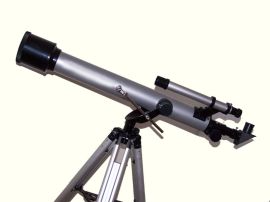 Writers with a preference for perception approach a subject from different angles. With their drive to explore, they don’t want to wrap up a project until forced to by the pressure of a deadline. Without that pressure, they can meander endlessly, failing to complete projects and collect the rewards of their hard work. How can perceiving writers honor their curiosity while producing results?
Writers with a preference for perception approach a subject from different angles. With their drive to explore, they don’t want to wrap up a project until forced to by the pressure of a deadline. Without that pressure, they can meander endlessly, failing to complete projects and collect the rewards of their hard work. How can perceiving writers honor their curiosity while producing results?
In an earlier post, I wrote about the importance of following your natural tendencies when writing a first draft. Then, during the editing process, you can go back and fill in the elements you missed.
Natural tendencies of perceiving writers
Those who prefer perception are inquisitive and spontaneous. Seizing opportunities as they arise, these writers like to experiment and discover solutions through serendipity.
Perceiving types are flexible and like to improvise. Decisions are postponed until the last minute in case new information comes to light. These types don’t mind uncertainty, and they’re not thrown off-balance by the unexpected, as judging types often are.
Deadlines don’t loom over perceiving types. They’re certain they’ll finish on time, even if they don’t know how.
These writers mull over their topic and conduct research before writing. They explore the subject thoroughly so they don’t miss anything. Their first drafts tend to be wide-ranging and somewhat disorganized.
Perceiving types work in spurts toward their final goal, following ideas as they occur. Interim milestones aren’t useful, because these types change their focus as new information arises. Since deadline pressure motivates them to complete a project, they work right up until the last moment.
As they mature, perceiving writers become more decisive and organized while retaining their curiosity and openness. They learn to trust their need to explore a topic thoroughly and their ability to pull it all together at the last minute.
Filling the gaps
If you’re a perceiving writer, verify the time requirements for completing the job. Work backward from the deadline to determine when you have to start. Ensure that all the resources you need are in place so you don’t get into a bind.
Test your assumptions about the scope of the work (for instance, make sure the photos in your source material are print-quality). To avoid a time crunch at the end, set goals to measure progress. Establish a cut-off point for conducting research so you have enough time to write.
After the first draft, narrow the subject. Identify and cut any extraneous information. If it’s not relevant to the reader’s immediate task or goal, move the information to an appendix or delete it.
Even if you don’t write an outline, develop an organizing framework. Present the material in a focused way. At the end of the project, be judicious about making last-minute changes. Consider the impact on other team members. Avoid risking the deadline.
If you’re feeling blocked, learn to say no. Don’t over-commit, and don’t work on so many projects at once that you’re not able to finish any of them. That energy boost you get as a deadline approaches won’t make up for a lack of sleep. Take care of yourself so you can put your best into your projects.
Sources:
Write from the Start by Ann B. Loomis
Writing and Personality by John K. DiTiberio and George H. Jensen
What Type Am I? by Renee Baron
Related posts:
ENFP – ENTP – ESFP –ESTP – INFP – INTP – ISFP – ISTP
Extraverted Writers: Talking It Out
Introverted Writers: Thinking It Over
Sensing Writers: Down to the Details
Intuitive Writers: What a Concept!
Thinking Writers: Logical Conclusions
Feeling Writers: People Who Need People
Judging Writers: Getting It Done








